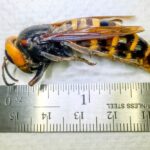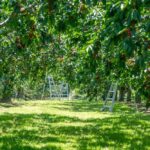
Tag Archives Bees

Varroa mite protection product for bees losing its punch
Producers may need multiple prongs of varroa mite control with some of their go-to solutions starting to lose potency

Weather turn bails out beekeepers
While honey yields are below average, it’s not the disaster many were expecting in July

Bees hit with pesky symptoms
Atypical weather this year impacted pest management for beekeepers

U.S. honey crop stung by climate change

Washington state eradicates first ‘murder hornet’ nest of the year
Nest found in northwestern county near B.C. border

U.S. training ag staff to track, trap, kill ‘murder hornets’
Invasive species remains threat to bees, honey producers

Honey optimism drops with drought
Low honey and winter survival worries are spreading among beekeepers as Manitoba’s drought conditions drag on

Honey market riding high, despite pandemic pitfalls
Pandemic pressures have helped drive local honey prices up over the last year

A multitude of bees are your tireless workers
You might be surprised to find out just how much extra canola a few more pollinators can bring to your bins

Ontario extends lost-labour production insurance
COVID-related coverage held over for 2021 program year


